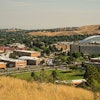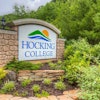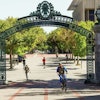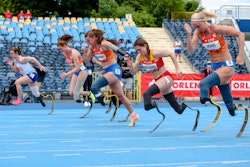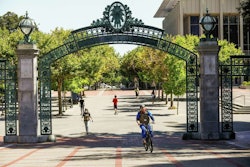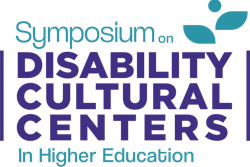Rollins College valedictorian Elizabeth Bonker made history earlier this month when she gave her speech at commencement using text-to-speech software. Bonker is nonspeaking or minimally speaking autistic, and she is not alone on her educational journey.
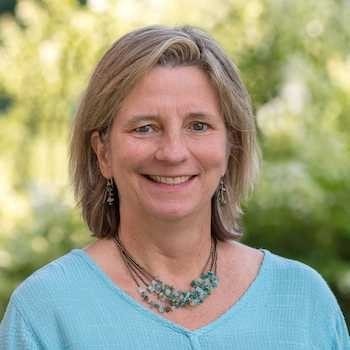 Dr. Lee Burdette Williams, executive director of the College Autism Network.
Dr. Lee Burdette Williams, executive director of the College Autism Network.
“The most common misconception about autism is that the label of autism is synonymous with developmental or intellectual delays,” said Williams. “The truth is, some with autism have intellectual or developmental delays, but lots do not. The diagnosis is problematic, because it does put a lot of very different people in one bucket.”
Academic acceptance of autistic students has come a long way in the last few decades. Dr. Jane Thierfeld Brown, an assistant clinical professor at Yale University’s Child Study Center and director of the College Autism Spectrum (CAS), an organization that helps students with autism and their families navigate the shift from high school to college, said this growth is perhaps a reflection of the increasing number of individuals born with or diagnosed with autism.
In the 1990s, roughly one out of 150 children were diagnosed with autism. That number has grown steadily since the early 2000s. Now the rate of autism is as common as one in 44, said Thierfeld Brown, and no clear scientific reason has been found for this phenomenon.
“Right now, there are just about 75 programs that are specifically for students with autism at colleges and universities,” said Thierfeld Brown. “Way back in 2000, there were pretty much none. By 2008, we had around ten programs—ever since then, it’s been growing.”
The support system for K-12 students with autism is completely different from higher education. Public schools must comply with the Individuals with Disabilities Education Act (IDEA) of 1975. School leaders and teachers use Individualized Education Programs (IEPs), created for each student by a team of experts working with parents. Once a student leaves secondary education, however, IEPs go away.
“Colleges have a whole different set of federal laws—the American Disability Act (ADA),” said Williams. “The ADA does not guarantee access to free and public education. [Colleges are] only obligated to give [students with disabilities] access to what a nondisabled student would get, and there’s a world of difference between success and access.”
This transition can make it even more difficult for first generation families or those with fewer resources to navigate higher education. According to a CAN study of students who self-reported having autism, only one in 225 college students identified as autistic, which does not correlate with the prevalence seen outside of higher education.
At Adelphi University in New York, the Bridges to Adelphi program has been working to support students with autism since 2008, when it began as a pilot program with the Jewish Child Care Association. By 2014, the program had become embedded into Adelphi, and it is now one of the roughly 75 institutions in the U.S. working to serve those with autism.
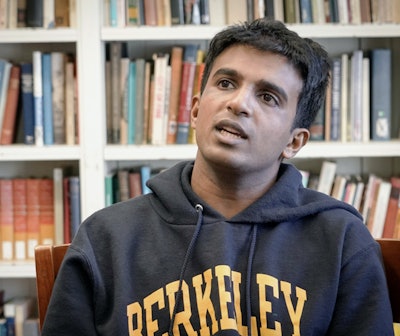 Hari Srinivasan, a minimally speaking student with autism, recently graduated from UC Berkeley. He is headed to Vanderbilt University this fall to earn his Ph.D. in neuroscience.
Hari Srinivasan, a minimally speaking student with autism, recently graduated from UC Berkeley. He is headed to Vanderbilt University this fall to earn his Ph.D. in neuroscience.
The Bridges to Adelphi Program works with all students, including those who are minimally or non-speaking students. Their sensory room offers a safe space for decompression, and the team encourages patience and understanding with minimally speaking students, giving them time to process and articulate their responses.
Flexible and openminded support is part of the University of California: Berkeley Disability Lab’s ethos, where Hari Srinivasan, a recently graduated minimally speaking student with autism, found a home. Srinivasan was awarded the Paul & Daisy Soros Fellowship for New Americans, a scholarship for children of immigrants, and he is his way to Vanderbilt University to join their doctoral neuroscience program in the fall.
“When many people meet Hari, they notice he stims, and in various ways,” said Dr. Karen Nakamura, a cultural and visual anthropologist at Berkeley and creator of the Disability Lab. Stimming refers to verbal noises or physical movements, sometimes repetitive, done by individuals with autism or other neurodiversity. “We had always had lab principles on the white board, and one was how to make a space accessible, a community agreement about the various things we all agree on. And stimming is ok, that’s one of the things.”
As Nakamura learned more about Hari, she found he is a talented writer. Together, they created Team Propaganda, which allowed Srinivasan to spread the word about the innovative, disability-centered designs the lab creates.
For all of the progress institutions have made since the passage of the ADA, Nakamura said that education needs to adjust the way it thinks about its purpose.
“Whether it’s K-12 or colleges or universities, many people still believe our job is to winnow the population, screen people out—there are the ones who will succeed and won’t,” said Nakamura. “Education is a place where we create an environment for people to thrive and flourish, for people to find themselves and can do what they want to do.”
Nakamura saw how Srinivasan had to fight for people to believe that his words, typed into a computer and read through a text-to-speech app, were truly his own. The amount of energy he expends to make people believe him, she said, “is enormously sapping.”
“[Hari] has to prove himself just as intelligent—it’s the same battle women [and people of color] had to prove themselves as intelligent to get into higher education,” said Nakamura. “And I keep wondering—[Hari] has so many talents—if he didn’t have to waste this energy, how much more could he do? And how many more nonspeaking autistics are being denied because people don’t believe them?”
Liann Herder can be reached at [email protected].


